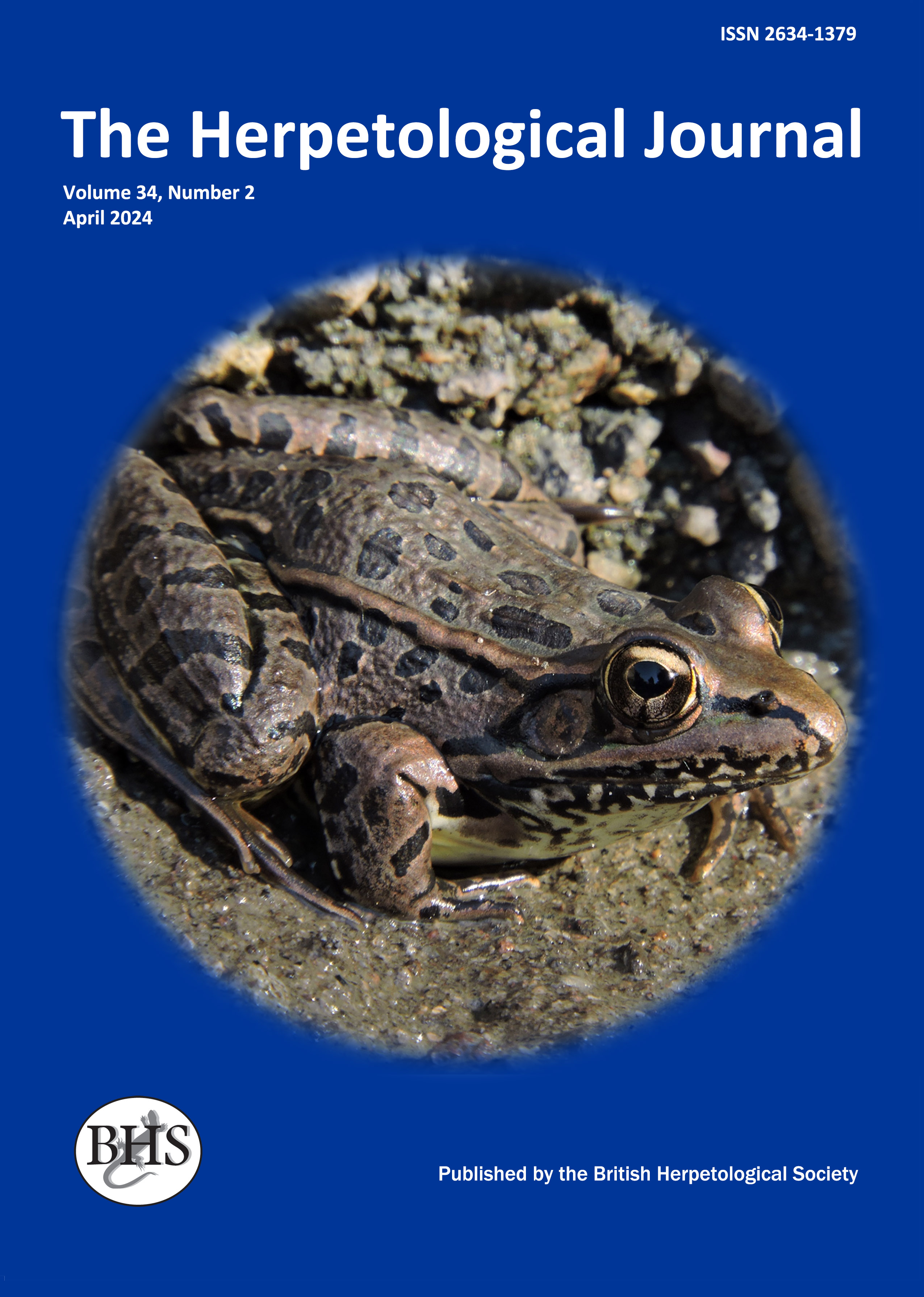
The Herpetological Journal
The Herpetological Journal is the Society's prestigious quarterly scientific journal. Articles are listed in Biological Abstracts, Current Awareness in Biological Sciences,Current Contents, Science Citation Index, and Zoological Record.
ISSN 0268-0130
2021 Impact Factor from Clarivate for the Herpetological Journal is 1.194, an increase of 0.332 from 2020.
pdf 04. Mitochondrial DNA analysis reveals extremely low genetic diversity in a managed population of the Critically Endangered Gharial (Gavialis gangeticus, Gmelin, 1789)
1121 downloads
Open Access
https://doi.org/10.33256/hj30.4.202206
pp. 202-206
Authors: Surya Prasad Sharma, Suyash Katdare, Zenab Zaidi, Mirza Ghazanfarullah Ghazi, Sandeep Kumar Gupta & Syed Ainul Hussain
Abstract: A decline in the numbers of threatened species is often reversed by reintroduction with the aim of repopulating or strengthening the population to reduce the risk of extinction. The success of reintroduction programs is associated with demographic and genetic monitoring of the reintroduced populations. We undertook a genetic assessment of the Critically Endangered gharial (Gavialis gangeticus) to assess the current level of genetic variation using three partial mitochondrial (mt) DNA regions: cytochrome b, cytochrome c oxidase subunit-I and the control region. We sequenced 103 samples collected across 14 nesting sites. A low level of mtDNA variation was observed in the sampled population (hd = 0.462 ± 0.048; Pi = 0.00029 ± 0.00004). Only five distinct haplotypes were observed in three segregating sites. This is the first assessment of the genetic variation in the wild gharial population to be made using mtDNA. Homogeneity in the 520 bp hypervariable control region of the crocodilian mtDNA is reported here for the first time. The low mitochondrial diversity and no genetic structure in the sampled population is indicative of a genetic bottleneck, the founder effect and probably associated with humanassisted augmentation of the population of the gharial. An extremely low level of genetic variation in the largest gharial
population highlights the vulnerability of the gharial population in the wild and calls for immediate genetic assessment of other gharial populations so that a robust conservation plan focusing on connectivity and enhanced protection can be developed for the long-term persistence of the gharial in the wild.
Keywords: haplotype, homogeneity, low diversity, protection

